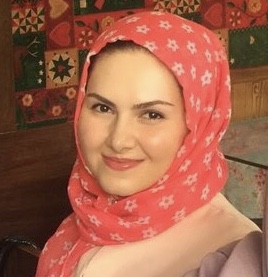
Towards a GMP-Compliant Protocol for the Differentiation of Human Pluripotent Stem Cells to Beta-like Cells for the Treatment of Type 1 Diabetes
Bahareh Rajaei1, Annina L. Roelofsen1, Ehsan Shokrollahi1, Bas Brinkhof1, Elena Naumovska1, Ronald J. van der Sluis1, Maaike Nieveen1, Marten Engelse1, Eelco de Koning1, Françoise Carlotti1.
1Department of Internal Medicine, Leiden University Medical Center, Leiden, Netherlands
Background: β-cell replacement therapy by allogeneic pancreas or islet transplantation is a promising approach for patients with type 1 diabetes. However, there is a scarcity of organ donors. The generation of insulin-producing pancreatic β-cells from human pluripotent stem cells (hPSC) in vitro would provide an unlimited cell source for drug discovery and cell replacement therapy for diabetes. Here we aim to generate β-cells under GMP (Good Manufacturing Practice)-compliant conditions that can be used for clinical application.
Methods: We applied a modified seven-stage (30-day) differentiation protocol to generate hPSC-derived insulin-producing β-like cells in a 3D microwell culture system. Next, in order to scale up the production of hPSC-derived β-cells, we adapted the protocol to spinner flask culture. Differentiation was assessed by qPCR, immunocytochemistry and flowcytometry for stage-specific marker expression. β-cell function was evaluated in vitro by GSIS (Glucose-Stimulated Insulin Secretion), and in vivo by intraperitoneal glucose tolerance tests after transplantation of stage-7 cell clusters in immunodeficient mice and human C-peptide secretion was determined by ELISA.
Results: In the microwell set-up, cells acquired a definitive endoderm phenotype at stage 1 (day 3), characterized by expression of SOX17 (87.2% ± 4.6; n=5), FOXA2 (82.8% ± 4.6; n=3), co-expression of c-KIT and CXCR4 (93.3% ± 5.6; n=4), and silencing of pluripotency marker OCT4 (2.8% ± 6; n=5). At the end of stage 4 (day 12), pancreatic progenitor cells were identified by the co-expression of PDX1/NKX6.1 (46.7% ± 3.5; n=3). Finally, at the end of stage 7 (day 30), C-peptide-positive β-like cells (49.5% ± 10.5; n=3) and glucagon-positive α-like cells (18.4%± 6.1; n=3) were present. The stimulation index upon exposure to glucose was 4.4 ± 3.1(n=5). Following transplantation of day-30 clusters into mice, stimulated human C-peptide levels reached 46 pmol/L (n=21), 70.5 pmol/L (n=19) and 327.4 pmol/L (n=11) at day 14, 28 and 60 respectively, indicating further maturation of the cells in vivo after transplantation. Next, we scaled up the cell culture in disposable spinner flasks, and obtained comparable differentiation efficiency.
Conclusion: We can generate functional hPSCs-derived β-like cells in GMP-compliant conditions in vitro. We will apply these protocols on a clinical-grade PSC line that is currently in expansion (banking) in the GMP facility of our institute. hPSCs-derived β-like cells are a promising future alternative to donor islets for the treatment of type 1 diabetes.